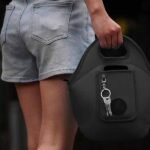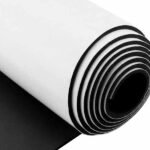I remember feeling both excited and a bit uneasy when I first ventured into diving. I worried about the cold water and possible discomfort. I wanted to find a wetsuit that kept me warm but did not restrict my movement. That anxiety grew every time I saw new, confusing options from various brands. Then I discovered a simpler method for picking the right beginner’s wetsuit. That relief pushed me to share these insights, so others can avoid confusion and have a smooth start on their underwater journey.
A suitable beginner’s wetsuit balances warmth, comfort, and easy movement. It uses neoprene that is neither too thick nor too thin, and it features a solid seal to reduce water flow. This combination helps new divers stay cozy while moving freely, which encourages positive experiences underwater.
I once watched a friend struggle with an ill-fitting, overly thick suit. The frustration and cold seeped through, and that friend almost quit diving. That moment showed me how important it is to find a wetsuit that meets a new diver’s basic needs while leaving room for growth.
What Is the Best Wetsuit for a Diving Beginner?
I often see people feeling lost when picking a first wetsuit. They read about different brands, cuts, or thicknesses and feel overwhelmed. It helps to begin with something simple. A beginner’s wetsuit should fit snugly but still let you stretch and move.
The best wetsuit for a new diver uses moderate neoprene thickness, comfortable seals, and an easy-entry design. This balance offers enough warmth while reducing the struggle of getting in or out of the suit.
Comprehensive View: Essential Traits for a Beginner’s Wetsuit
I look for a brand that has reliable stitching and minimal water leakage. I also like zippers placed where someone with limited experience can handle them, such as a back zip with a sturdy pull cord.
Construction Quality
- Flatlock Stitching: Common on thinner suits but can allow some water seepage
- Sealed and Taped Seams: Better for colder water, more expensive but more insulating
Zipper Placement and Ease
| Zipper Position | Comfort Level | Best For |
|---|---|---|
| Back Zip | Traditional, easy pull | Recreational diving |
| Front Zip | Quick entry, simpler | Warm water diving, surfers |
| No Zip | Maximum stretch | Advanced or specialized use |
I once tested a no-zip suit. It felt nice in motion, but it was quite tricky to put on. That reminded me why many new divers prefer back-zip designs.
What Are the Essential Features of a Beginner’s Wetsuit?
A new diver often wants warmth, mobility, and a straightforward design. Too many fancy add-ons may be distracting at this stage. The focus should be on a suit that keeps you comfortable during those first lessons and helps you adjust to underwater movement.
A beginner’s wetsuit stands out for flexible neoprene, user-friendly zippers, and robust seams. Soft linings can also add comfort. Avoid extremely specialized suits that cost more but may not benefit a newcomer.
Comprehensive View: Balancing Cost and Performance
I compare different suits by checking the neoprene’s stretch rating and the seam style. A flexible suit can help a new diver breathe easier and learn basic skills without feeling restricted.
Balancing Budget and Durability
Some budget wetsuits use lower-grade neoprene that loses elasticity faster. Others might have fewer features but use higher-quality materials. I like suits that balance cost-effectiveness and brand reliability.
Additional Comfort Elements
| Feature | Advantage |
|---|---|
| Smooth Neoprene Cuffs | Reduced water flush |
| Soft Inner Lining | Extra warmth and quick drying |
| Protective Knee Pads | Prevent tears or abrasions |
I think it’s wise to invest in one with protective knee pads. New divers often kneel on rough surfaces during training.
Which Neoprene Thickness Is Best for New Divers?
New divers usually wonder if they need a thick wetsuit for warmth or a thin one for easier movement. Water temperature plays the biggest role. However, comfort also matters. A 3mm suit is popular for warm waters, while a 5mm suit gives extra insulation in cooler conditions.
Beginners often do well with 3mm to 5mm neoprene, depending on water temperature. This range provides decent warmth without feeling too restrictive. Adjust based on local dive sites or training locations.
Comprehensive View: Selecting the Right Neoprene Thickness
I look at local water temperatures. If it often dips below 20°C, I lean toward 5mm for extended dives. If it’s warm, a 3mm can be enough.
Temperature vs. Neoprene Thickness
- 3mm: Warm waters above 24°C (75°F)
- 5mm: Mild to moderate waters, around 18–24°C (64–75°F)
- 7mm: Colder waters, but often too bulky for a new diver starting out
Regional Temperature Guide
| Region | Common Water Temp | Suggested Thickness |
|---|---|---|
| Tropical Reefs | 26°C+ (79°F+) | 3mm or shorty |
| Mild Climates | 20–24°C (68–75°F) | 3–5mm full suit |
| Cold Waters | <18°C (<64°F) | 5–7mm or semi-dry |
People often worry about thickness, but I suggest focusing on the average conditions of your usual dive spots. Staying comfortable can improve enjoyment and safety during training.
How Do You Choose the Right Style and Fit?
Wetsuit styles vary from shorty to full coverage. The choice depends on personal preference, water temperature, and coverage needs. Fit is crucial. A loose wetsuit allows water to flow in and out, reducing warmth. An overly tight suit restricts blood flow and breathing.
Choose a style based on water temperature and coverage. A full suit is standard for most beginners. It should be snug around the wrists, ankles, and neck without cutting off circulation.
Comprehensive View: Identifying the Ideal Fit
I check if the suit bunches around my waist or shoulders. If it does, that might mean more water circulation. If I feel tingling or numbness, it’s probably too tight.
Testing a New Wetsuit
- Dry Fit: Wear it in a store or at home, bend arms and knees
- Check Seals: See if water could freely rush in at ankles or wrists
- Look for Smooth Zipper Alignment: Crooked or stiff zippers hint at poor design
Common Fit Errors
| Error | Symptom |
|---|---|
| Suit Too Tight | Shortness of breath or pinching |
| Suit Too Loose | Saggy spots around midsection or limbs |
| Neck Seal Gap | Water flush that decreases warmth |
I realized a well-fitting suit can give a sense of second skin. That improves confidence in the water.
How do I choose my first wetsuit?
Starting divers often have a lot of questions about brand preference, price, and size charts. It can feel intimidating. Many find that looking at local conditions, setting a modest budget, and checking store return policies can simplify this decision.
First, assess where you will be diving most. Second, pick a thickness suitable for that region. Third, try on different sizes or consult fit guides. Finally, keep a reasonable budget but prioritize fit and warmth.
Comprehensive View: Practical Tips for Your Initial Purchase
I often tell new divers to read product reviews from people with similar body types. Also, watch for seasonal sales or clearance events.
Considering Brand Support
- Warranty: Some brands offer extended warranties on seams
- Customer Service: Helpful for size exchanges or repairs
- Local Dealers: Easy to try on multiple sizes
Sample Budget Planning
| Budget Range | Suit Quality | Notes |
|---|---|---|
| Low (<$150) | Basic neoprene, fewer features | Good for warm-water quick starts |
| Mid ($150–$300) | Balanced brand, standard thickness | Decent for regular training |
| High (>$300) | Premium neoprene, advanced seals | Ideal for colder waters or frequent diving |
I think it’s best to not overspend on your first suit. But do choose a decent option that supports skill development.
Are There Special Features Beginners Should Look For?
Many wetsuits have optional extras like pockets, interior linings, or specialized seals. Some also include color patterns or reflective strips. Beginners should focus on functional elements that reduce hassle or improve comfort rather than flashy add-ons that inflate price.
Look for features like reinforced knee pads, sturdy zippers, and smooth internal linings. These details extend the suit’s life and add comfort without making the design too complicated.
Comprehensive View: Evaluating Additional Features
I suggest looking at how and where you will dive. If you plan to carry small tools or cameras, pockets might matter. If you’re diving in cooler water, a thermal lining can help.
Handy Extra Touches
- Ankle and Wrist Seals: Minimize flushing
- Drain Holes: Prevent ballooning in the legs or arms
- Color Panels: Not just for looks; they can aid visibility
Overlooked but Useful Details
| Feature | Benefit |
|---|---|
| Small Zip Pocket | Stashes keys or small accessories |
| Velcro Neck Closure | Fine-tunes collar tightness |
| Glideskin Neck | Reduces chafing while forming a water seal |
I prefer suits with comfortable neck seals. I once wore one with a rough collar that irritated my skin after a few dives. That experience taught me to check for softness in contact areas.
Is a Custom-Made Wetsuit Worth It for Beginners?
New divers may think about investing in a tailor-made suit, hoping for a perfect fit or advanced features. While custom suits can feel amazing, they are often expensive and may not be necessary when you are still figuring out how much you will dive.
A custom wetsuit can solve unusual fit issues and offer high-grade insulation. But if you are only diving occasionally, an off-the-rack suit may be a more practical choice.
Comprehensive View: Deciding on Customization
I consider how often I plan to dive. If I see myself diving several times a month, and I have difficulty finding a good off-the-rack fit, I might choose custom.
Comparing Off-the-Rack vs. Custom
- Off-the-Rack: Quicker to buy, often cheaper, many brands offer numerous sizes
- Custom: Higher cost, longer lead time, but a tailored fit for complex body shapes
Price vs. Benefit
| Factor | Off-the-Rack | Custom-Made |
|---|---|---|
| Cost | Lower to moderate | Often high, depends on materials |
| Fit Complexity | Standard sizes, can be hit or miss | Precise measurements for each panel |
| Long-Term Value | Good if diving is occasional | Excellent if diving is frequent |
I usually recommend trying standard suits first. If they never fit right, or diving becomes a serious hobby, a custom suit might be the next step.
Conclustion
Choosing the best beginner’s wetsuit can feel daunting, but it becomes simpler when focusing on the right priorities. I watch for a comfortable fit, moderate neoprene thickness, and essential features like sturdy seams or easy zippers. A new diver can do well with a suit that balances warmth and flexibility without many flashy extras. This approach helps people dive with confidence and enjoyment from the start.
I manage a factory in China named Szoneier. I focus on neoprene products like wetsuits, gloves, and bags. I have 20 advanced production lines, and I serve clients seeking B2B, wholesale, OEM, or ODM solutions. I often meet people like Mark Chen, who wants reliable, durable wetsuits for his customers. My products feature soft and elastic neoprene that can be designed for various thicknesses, colors, and special features. I also offer low MOQs and free samples.











